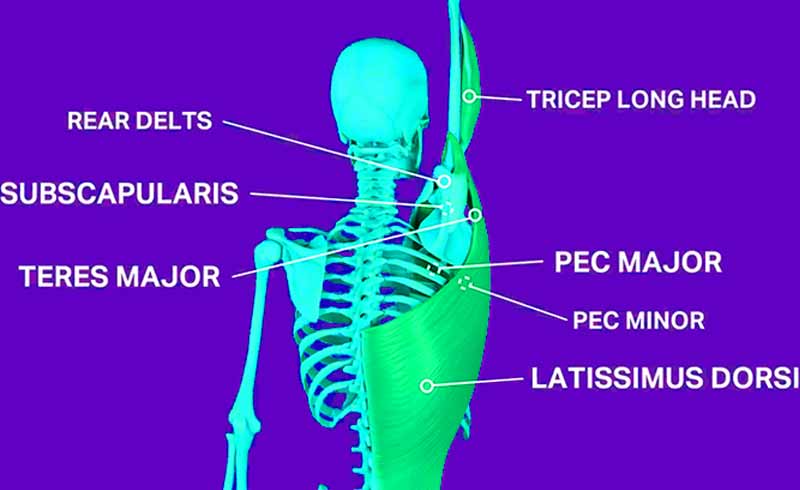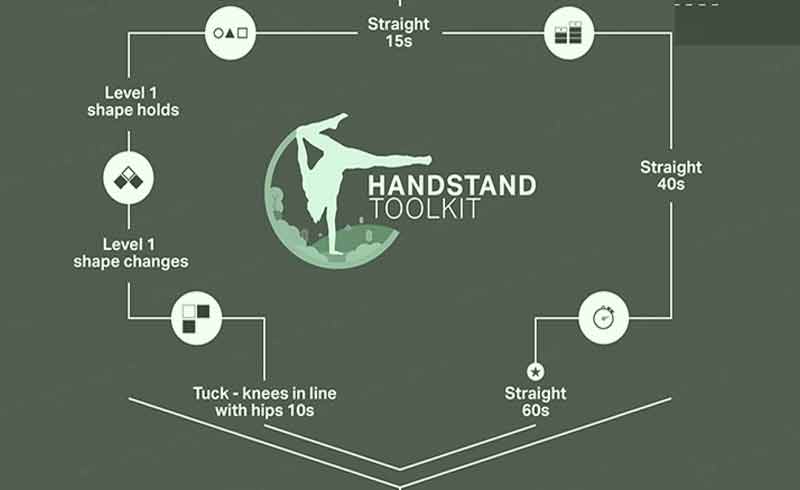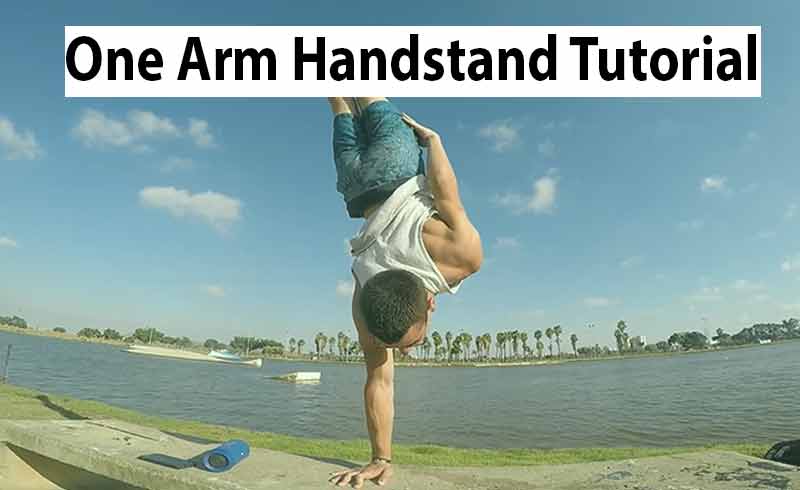Welcome to the thrilling world of the one arm handstand!
This amazing movement of both strength and balance has caught the attention of countless aspiring calisthenics and fitness enthusiasts.
Whether you identify as a gymnast, calisthenics, street workout, or just someone simply seeking ways to push yourself both physically and mentally, mastering the one arm handstand is an exceptional feat.
Let’s start learning the one arm handstand! This guide will show you all the tips and techniques you need to know. We will provide many training drills and techniques to help you improve.

So, let’s begin! We’ll uncover some interesting secrets for you along the way too.
What is a One Arm Handstand?

The one-arm handstand, or one-handed handstand, is a very hard variation of the handstand. It needs you to balance your whole body with just one arm while the other arm stays out to the side.
This takes not only strong arms but also a stable core, good wrists, and control over your body.
If you want to really master the one handed handstand, there’s something you need to know first.
It’s important to learn how to do a normal handstand with both arms first and balance it for at least 30 to 60 seconds.
This helps your body get strong and teaches you balance skills. After that, once you’re feeling confident in the two-arm handstand, you can practice doing it with only one arm
One-arm Handstand Prerequisites: The Requirements
If you want to perform a one arm handstand, first make sure you have a good base.
Build up your wrist strength and mobility, focus on keeping your core stable, and work on having strong shoulders that can move with flexibility.
These three points help create a foundation for this difficult calisthenics move, allowing you to learn it safely and properly.
Remember to take the time needed to develop these areas as they will benefit other calisthenics exercises too!
Now, let me explain further:
1. Wrist Strength and Mobility:
Maintaining balance and avoiding yucky hurts during one arm handstand needs strong and flexible wrists.
To make your wrists stronger, do things like wrist push-ups, wrist curls, and wrist extensions when you do your practice regularly.
It also helps to stretch out and exercise your wrists so they can move around easier in more ways.
This makes it less likely that you’ll get hurt, uncomfortable, or fall over when doing a one-arm handstand!
2. Core Stability: The Key to a Balanced Handstand
To do a handstand using one arm well, you need to have a strong core that makes you balance and stay stable.
To strengthen your core muscles, you can do exercises like planks, hollow holds, and leg raises as part of your training routine.
You not only need strength for the core but also need endurance so that you can stay in place while doing one arm handstands!
3. Developing Shoulder Stability and Flexibility:
Having strong and bendy shoulders are super important if you want to be able to do a one arm handstand.
These exercises can help you get there: shoulder presses, push-ups, and stretching your shoulders. Doing these will make your shoulder joints stronger and help them move better too!

Besides that, try doing handstand shrugs and scapular push-ups. This will help you balance better and keep yourself steady while doing a one arm handstand. It might seem hard at first but with practice, it gets easier.
The Basics: The Two Arm Handstand For 1 Minute
If you wanna do a one arm handstand, first learn the regular two arm handstand. It’s really important because it gives you strong, balanced, and awareness for doing the harder variation which is with a single arm!
Your body will be super prepared to tackle this challenge. So don’t forget about getting good at both-handed handstands before attempting something else!
I would suggest that you work on mastering a straight 2 arms handstand for at least one minute before attempting a one-arm handstand.
Additionally, it’s important to have handstand intelligence, which basically just means being aware of your surroundings when practicing your handstands so you don’t fall by bumping into things nearby.
It’s also important to be patient with yourself and take breaks when needed, remember that everyone learns at their own pace!
So, here are some tips to start with tow arm handstands:
In order to do a two-arm handstand that is strong, it’s important to remember a few things
- First of all, you want your body to be lined up properly.
- You also need to use your shoulders actively and keep your core nice and tight.
- To get started, practice by doing the handstand with the help of a wall. This will make sure you’re lined up correctly and can balance well.
- When you feel ready, try moving away from the wall bit by bit until you reach longer holds with control and stability.
Here are some other tips to build endurance and control:
Furthermore, It’s really important to stay strong and in control when you’re doing a handstand with two arms. a great way to get better at it is to
- Practice holding the handstand,
- Walking around on your hands, and doing handstand push-ups.
Just remember not to rush into anything too hard or too long before you’re ready! Try working slowly up towards longer handstand holds and tougher exercises. It’s all about taking small steps and progressions toward your calisthenics goals!
One Arm Handstand Drills and Exercises
Becoming a master in the one arm handstand needs some particular exercises and drills to make you strong and stable.
To achieve this skill, you need to concentrate on developing your balance as well. Not everyone can do it easily, but don’t get disheartened!

Note That: You may need training with resistance bands or partner-assisted exercises.
Here are some strategies and drills to help you on your journey:
1- Developing Single Arm Strength and Stability
It’s super important to get your supporting arm really strong and steady. This means you need to work hard on that arm so it can hold up your whole body without shaking or wobbling around.
So, try to incorporate the following exercises into your handstand training:
Single-Arm Plank
To do this exercise, first start by getting into a position like you’re going to do a regular plank. But instead of putting both arms down on the floor, put all your weight on one arm while reaching your other arm out to the side or putting it at your hip.
Hold yourself up like this with your tummy muscles for some time. Don’t worry if you can’t hold it for very long at first, just try and go longer as you get stronger. Then switch to another arm.
- Bench Press Calculator - April 22, 2024
- Press to Handstand: Ultimate Step-by-Step Guide - April 22, 2024
- Cable Press (How To Do, Benefits, Targeted Muscles, Alternative) - April 22, 2024

